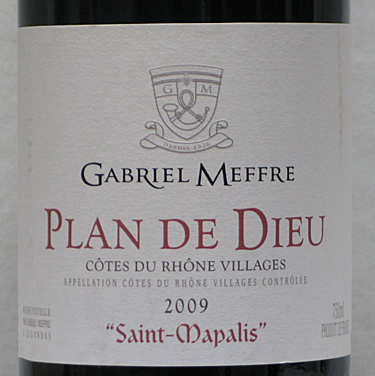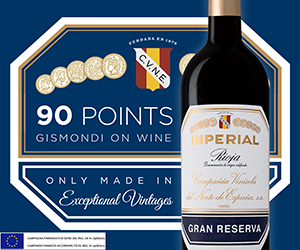When Americans start talking about taxing the rich and removing personal tax deductions such as mortgage payments, the economy is moving into a sector few if any living experts have ever experienced.

We can argue over whether we are in another downturn, a full-blown recession or maybe even on our way to a depression but none of those matters if you are in the business of growing grapes and making wine. What matters is how you are going to market your wine this winter and who is going to buy it.
Restaurant and retail buyers have been selling off inventory for two years, and while they are poised to restock, it wouldn't take much for them to put off purchasing substantial quantities of wine while the markets remain unsettled. That means another backlog at wineries and more pressure on prices. Wine has always been a discretionary expense for consumers but in British Columbia, where taxing wine is a government sport, it is fast becoming a luxury. Trading down has become a way of life for local wine buyers and the winter of 2011/2012 looks as if it will be the biggest yet for trading down. All that and we haven't even factored in the HST/PST mess that only further complicates the wine tax equation.
The trick, or the trade-down, is to find a wine that excites you as much as the one you're drinking but costs a lot less money. Think of the $80 Napa Valley cabernet, versus the $20 Mendoza malbec, or more likely the $25 Chianti Classico versus the $15 Sicilian red.
It's not all bad news, at least for wine drinkers. That's because the quality of inexpensive wine has never been higher and the threat of a recession will ensure that even better wine will be sliding down under the $20-range all winter and beyond. You only need to look for it.
Today we offer six labels that represent some of the best of the trading down, if you can describe anything to do with trading down as best. Let the swapping begin.
South-central Italy is a fine place to look for value and a good example is the Colle Secco Rubino Montepulciano d'Abruzzo 2006. You read that right, the vintage is 2006 and with five years of bottle time, it is ready to drink. The entry is dry and round with fresh acidity and a touch of tannin in the back end. The palate mixes smoky, dried herbs and meaty notes with coffee, barnyard and cherry flavours. A rustic spaghetti red that can be tamed with some meatballs.
If you love big reds, and don't get white wine, consider trading down to Dr. Loosen Ürziger Würzgarten Kabinett 2009 from the Mosel-Saar-Ruwer in Germany. Ürziger Würzgarten is grown on red volcanic soil, essentially decomposed lava, over the blue slate and the result is a rich, nervy white full of big fruit flavours. A terrific Riesling on the slightly heavier fruity style with spicy, herbal, cardamom notes and the taste of Christmas cake.
Closer to home, skip the pricey red burgundies and substitute the Blue Mountain Pinot Noir 2009 from Okanagan Falls. There is plenty to like here, beginning with a standard the rest of the valley would do well to ape. We love its dry attack and the dark fruit, ripe rhubarb, compost and strawberry jam flavours. You can drink it now but it will improve with age in the bottle. Love the sensible alcohol here. Great value. Order online or private wine shops only.
Gabriel Meffre Plan de Dieu Cotes du Rhone Villages Saint Mapalis 2009 is a mouthful and at a mere $15 a bottle, this is another delicious '09 from the Rhone. Look for a spicy, red fruit nose with traces of dried herbs and pepper. The palate is similar with dense, rich fruit, bits of chocolate and smooth tannins. Drink now with lamb chops or hold five years for even better results. Plan de Dieu or literally the "Plain of God," has been planted since the late Middle-Ages and was recently restored by Meffre. In 2005 it was officially recognized with "AOC Cotes du Rhône Villages" classification.
Trading malbec for bonarda will get you a decent bottle of Argento Reserva Bonarda 2010 from Mendoza. Bonarda always has plenty of colour but in this case it comes with a fresh, floral, raspberry scent. The flavour is similar with a savoury note and jammy texture. The finish shows a touch of vanilla from its aging in American oak. The fruit is grown at Rivadavia, Mendoza at 600-700 metres above sea level. Perfect for the coming hamburgers wars.
Finally back to the south of France and the Château de Valcombe Costières de Nîmes 2009 a blend of Syrah and Grenache that delivers a lot of flavour for $13. Expect a meaty, raspberry nose with hints of licorice and spice. The entry is soft and juicy with meaty, black raspberry flavours and a pleasant, soft, simple finish. A solid red for the by-the-glass wine list or serve liberally with hamburgers, mushrooms or stews. Good value.
TRADING DOWN
Colle Secco Rubino Montepulciano d'Abruzzo 2006, Abruzzo, Italy
Price $18
UPC 8002001047086
Score 86/100
Remarks A rustic spaghetti red that can be tamed with some meatballs.
Dr. Loosen Wehlener Ürziger Würzgarten Kabinett 2009, Mosel-Saar-Ruwer, Germany
Price $26
UPC 183103000075
Score 90/100
Remarks A rich, nervy attack full of big fruit flavours.
Blue Mountain Pinot Noir 2009, Okanagan Falls, Okanagan Valley, British Columbia, Canada
Price $25
UPC 00626452501096
Score 90/100
Remarks Old vineyards and multiple clones surely add to its complexity.
Gabriel Meffre Plan de Dieu Cotes du Rhone Villages Saint Mapalis 2009, Rhone Valley, France
Price $15
UPC 3142920024401
Score 88/100
Remarks Another delicious '09 from the Rhone.
Argento Reserva Bonarda 2010, Mendoza, Argentina
Price $15
UPC 007794450088307
Score 87/100
Remarks Juicy, savoury, jammy fruit. Hamburgers anyone?
Château de Valcombe Costières de Nîmes 2009, Languedoc, France
Price $13
UPC 3760042790143
Score 86/100
Remarks Soft and juicy with meaty black raspberry flavours.
http://www.vancouversun.com/business/Best+trading+down+labels/5488037/story.html#ixzz1cCvrZIc8

 quicksearch
quicksearch





